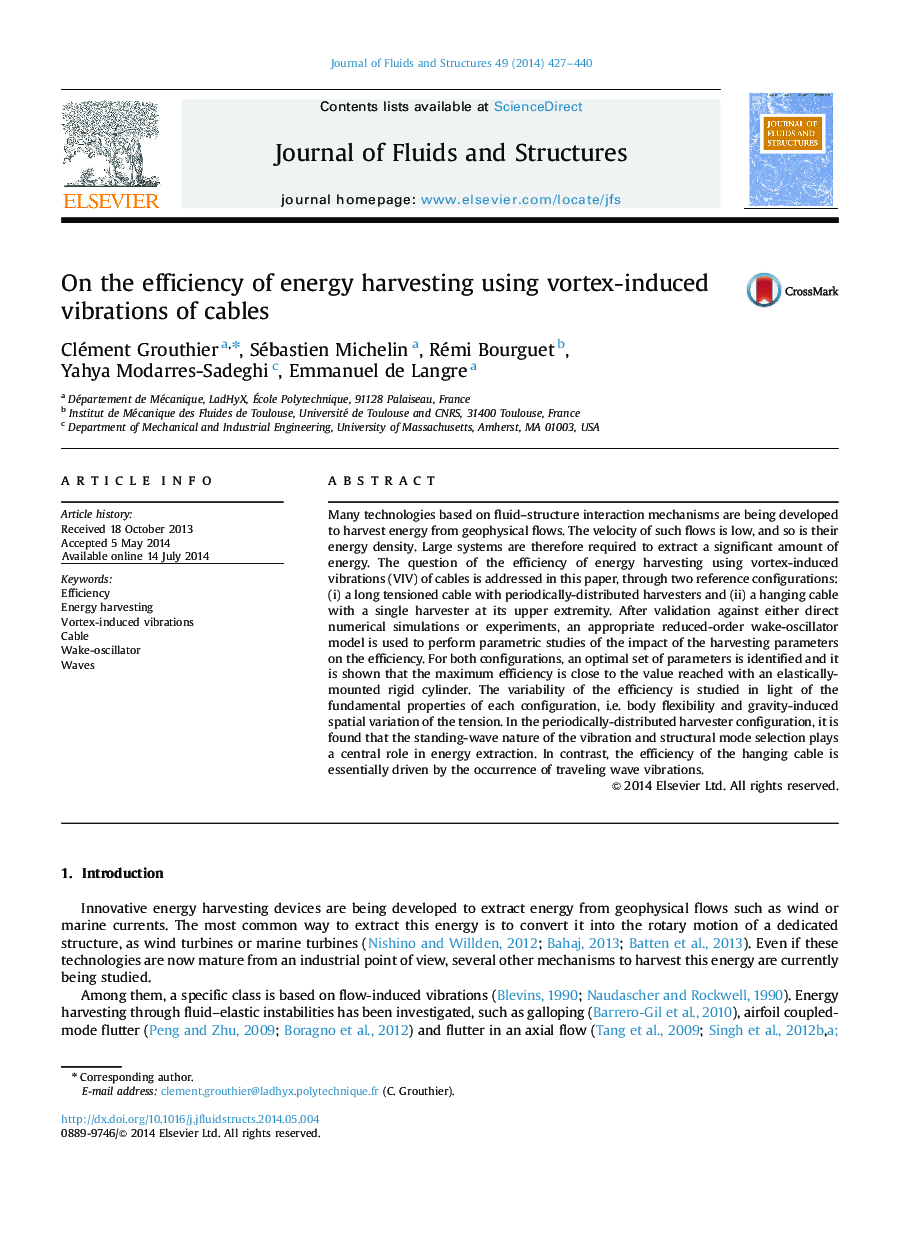| Article ID | Journal | Published Year | Pages | File Type |
|---|---|---|---|---|
| 7176115 | Journal of Fluids and Structures | 2014 | 14 Pages |
Abstract
Many technologies based on fluid-structure interaction mechanisms are being developed to harvest energy from geophysical flows. The velocity of such flows is low, and so is their energy density. Large systems are therefore required to extract a significant amount of energy. The question of the efficiency of energy harvesting using vortex-induced vibrations (VIV) of cables is addressed in this paper, through two reference configurations: (i) a long tensioned cable with periodically-distributed harvesters and (ii) a hanging cable with a single harvester at its upper extremity. After validation against either direct numerical simulations or experiments, an appropriate reduced-order wake-oscillator model is used to perform parametric studies of the impact of the harvesting parameters on the efficiency. For both configurations, an optimal set of parameters is identified and it is shown that the maximum efficiency is close to the value reached with an elastically-mounted rigid cylinder. The variability of the efficiency is studied in light of the fundamental properties of each configuration, i.e. body flexibility and gravity-induced spatial variation of the tension. In the periodically-distributed harvester configuration, it is found that the standing-wave nature of the vibration and structural mode selection plays a central role in energy extraction. In contrast, the efficiency of the hanging cable is essentially driven by the occurrence of traveling wave vibrations.
Related Topics
Physical Sciences and Engineering
Engineering
Mechanical Engineering
Authors
Clément Grouthier, Sébastien Michelin, Rémi Bourguet, Yahya Modarres-Sadeghi, Emmanuel de Langre,
